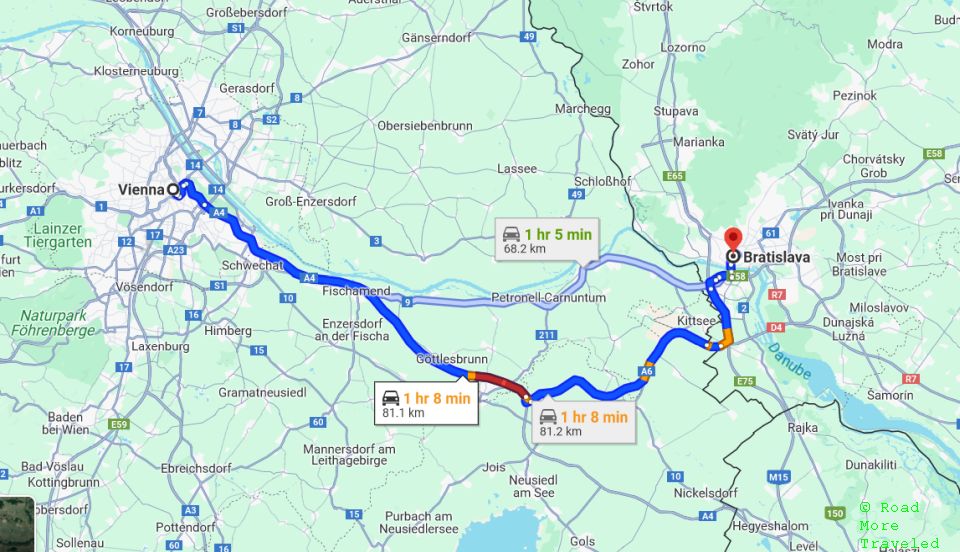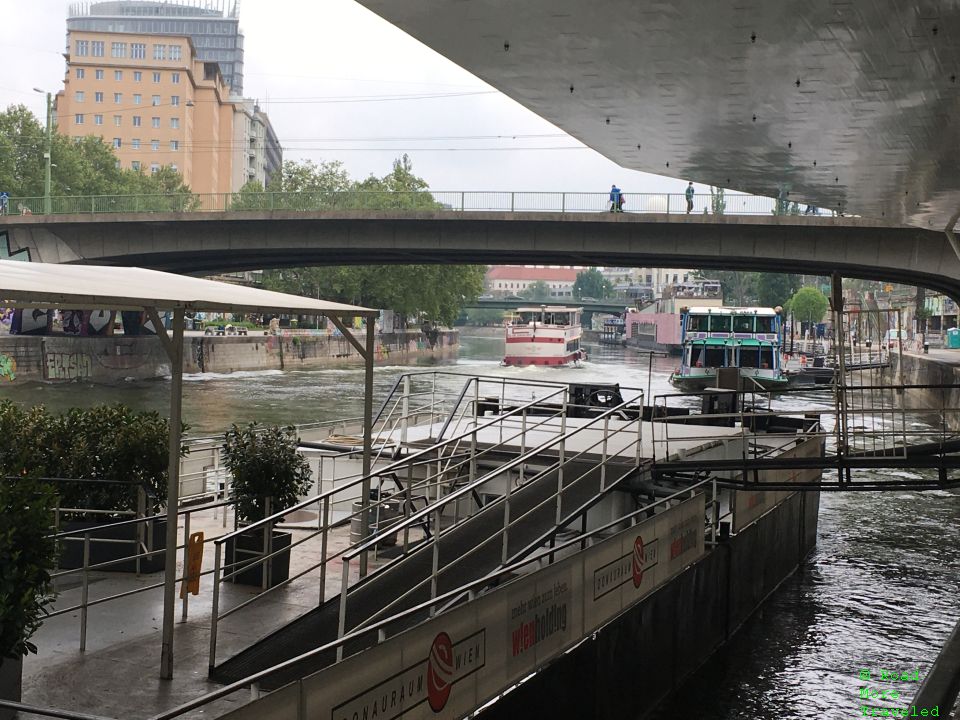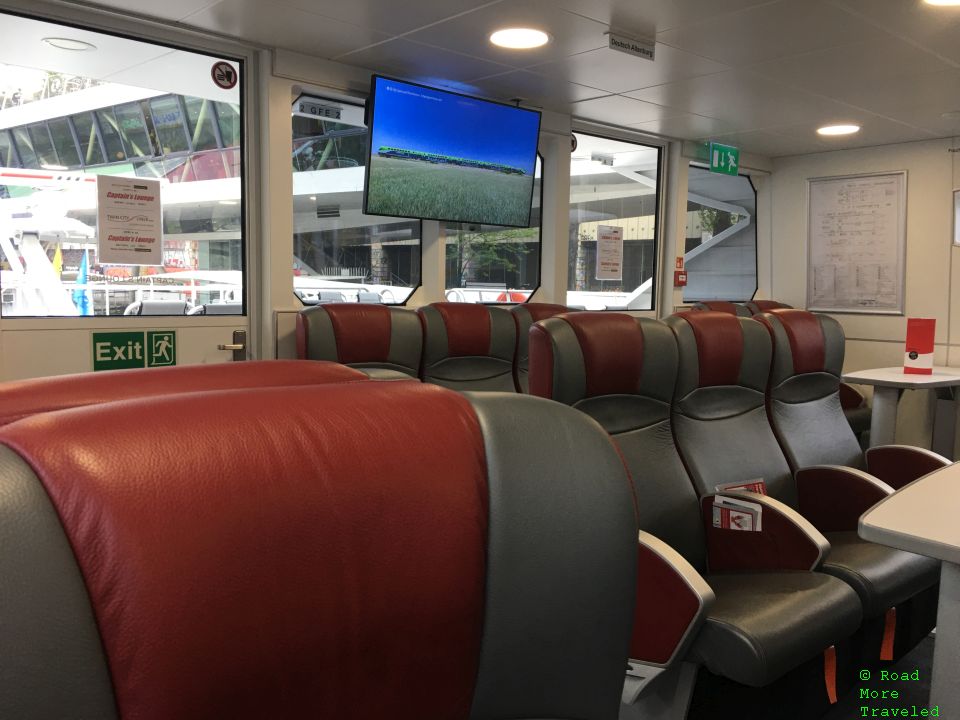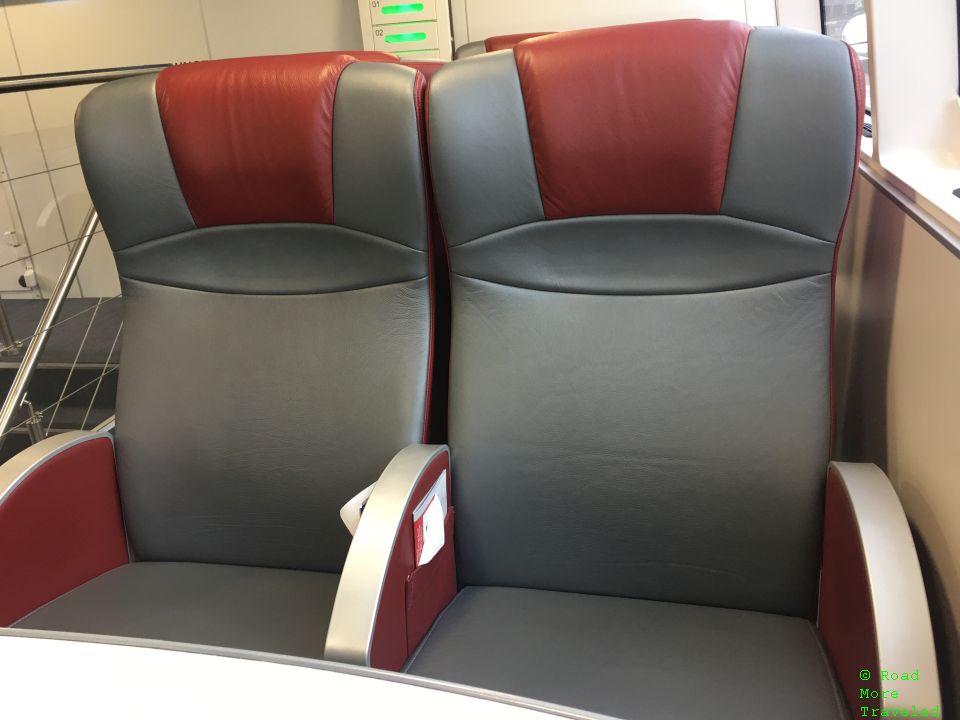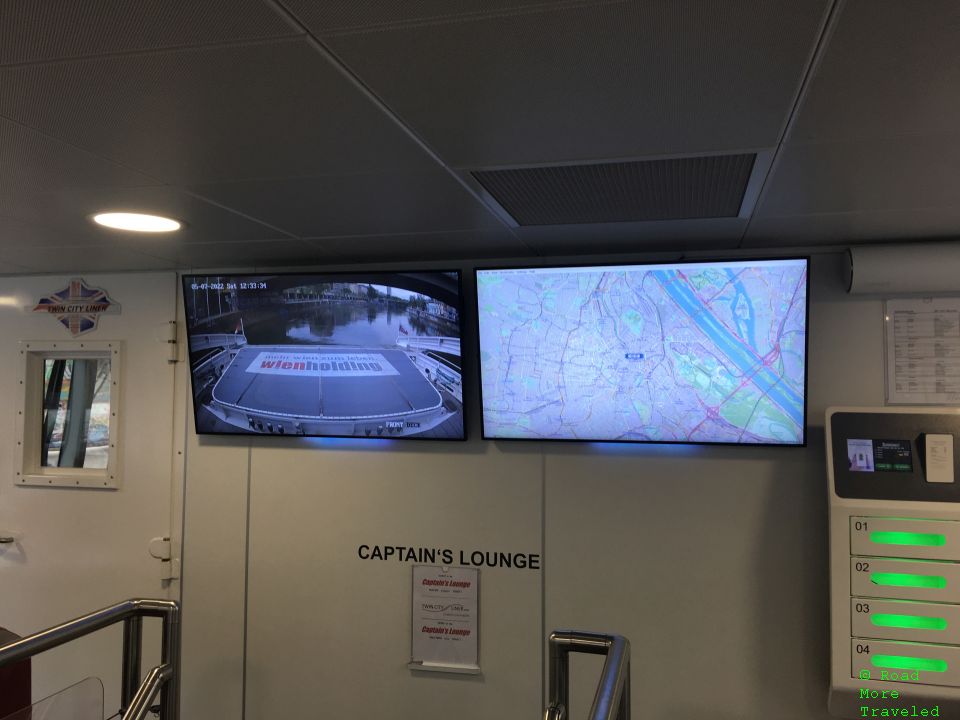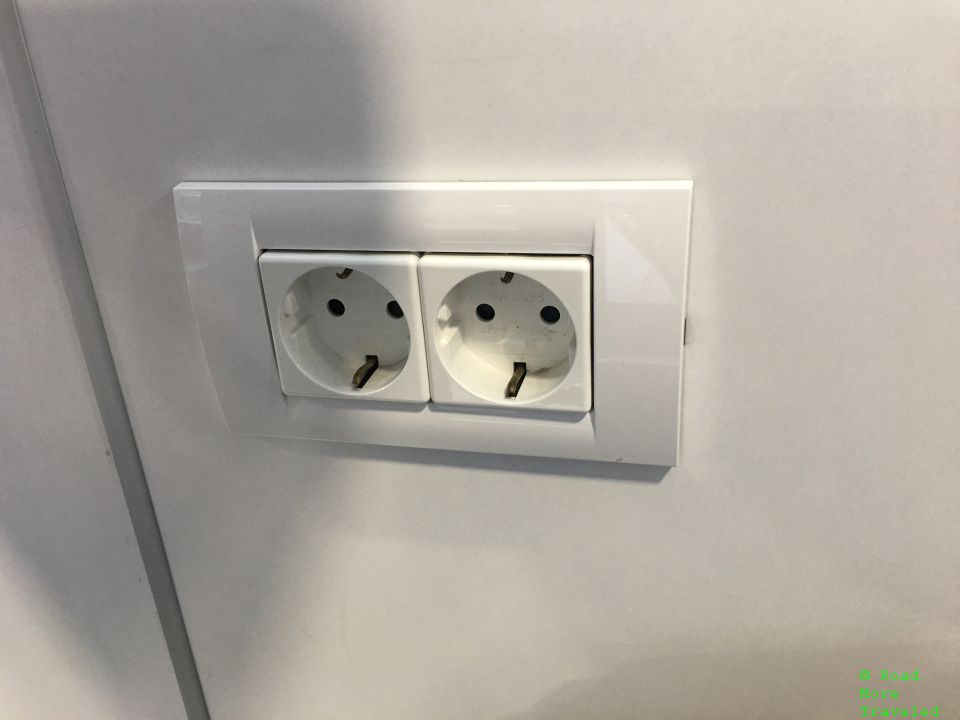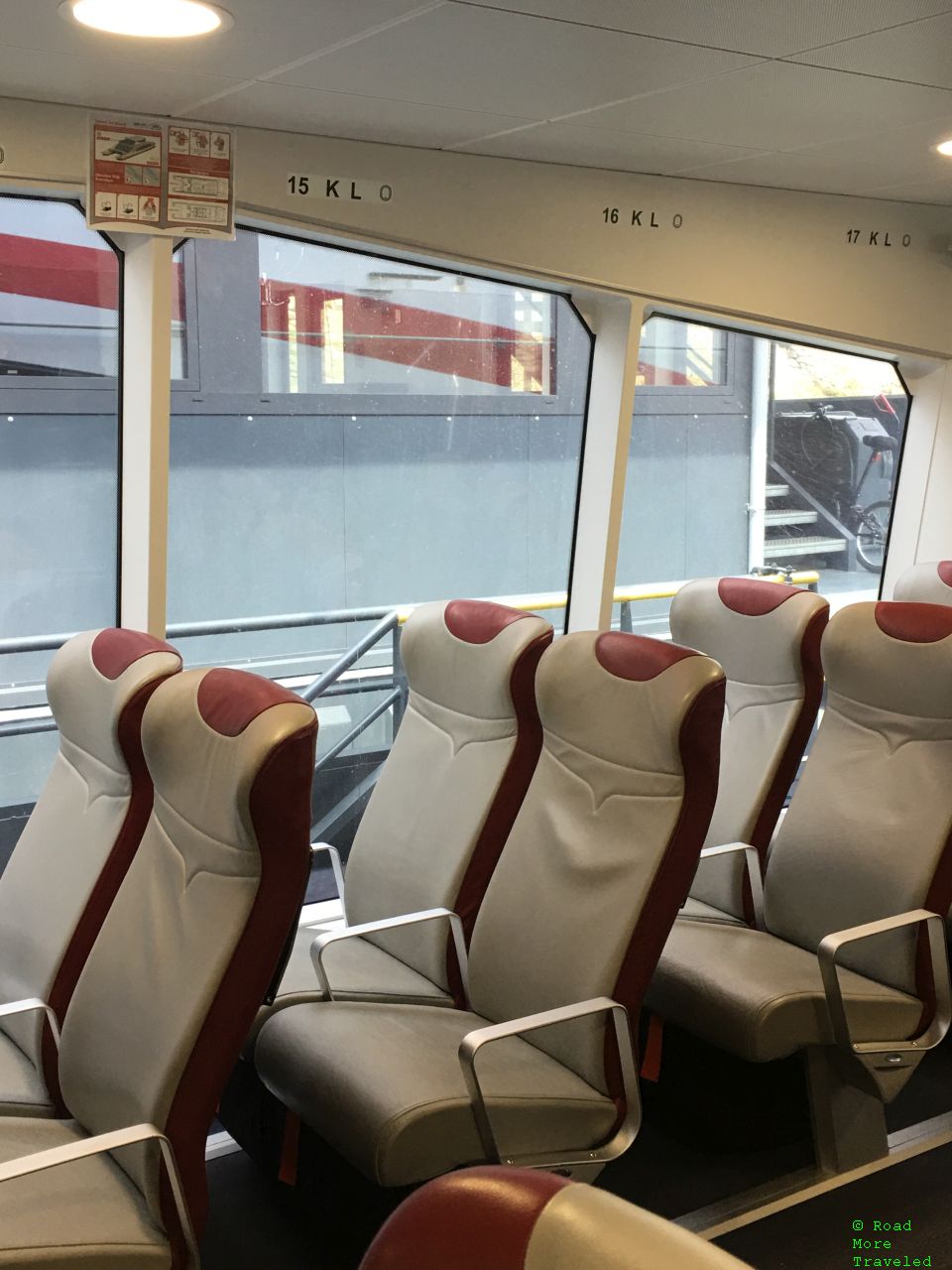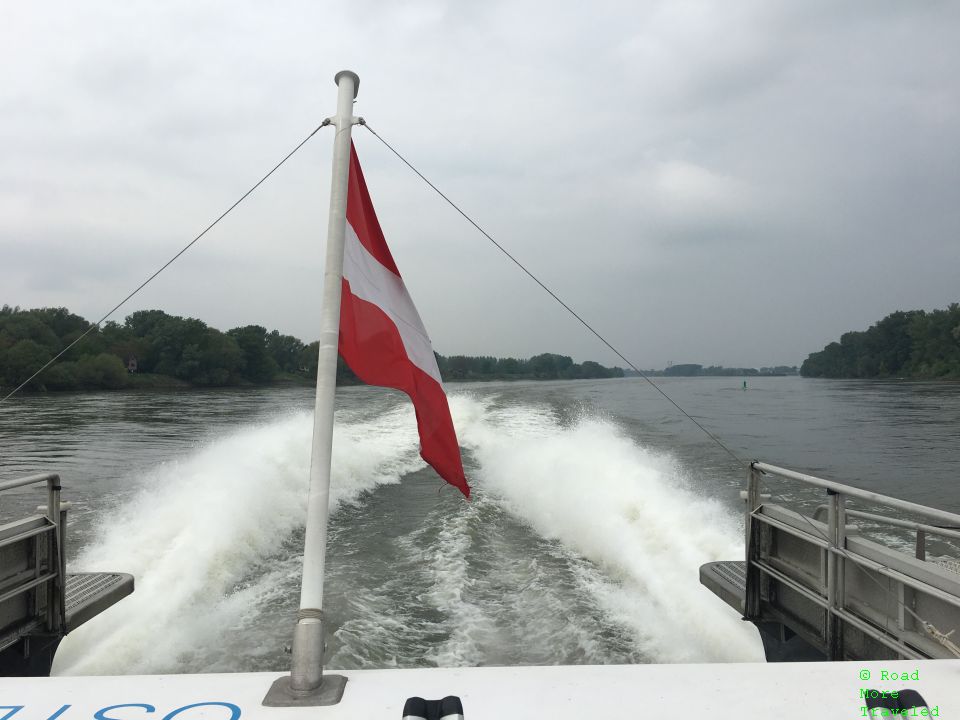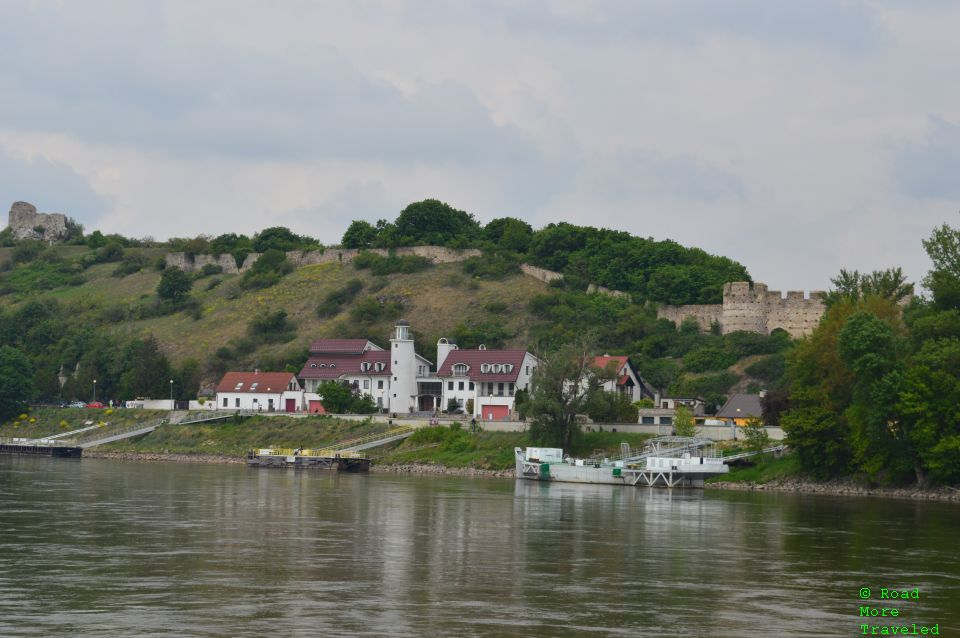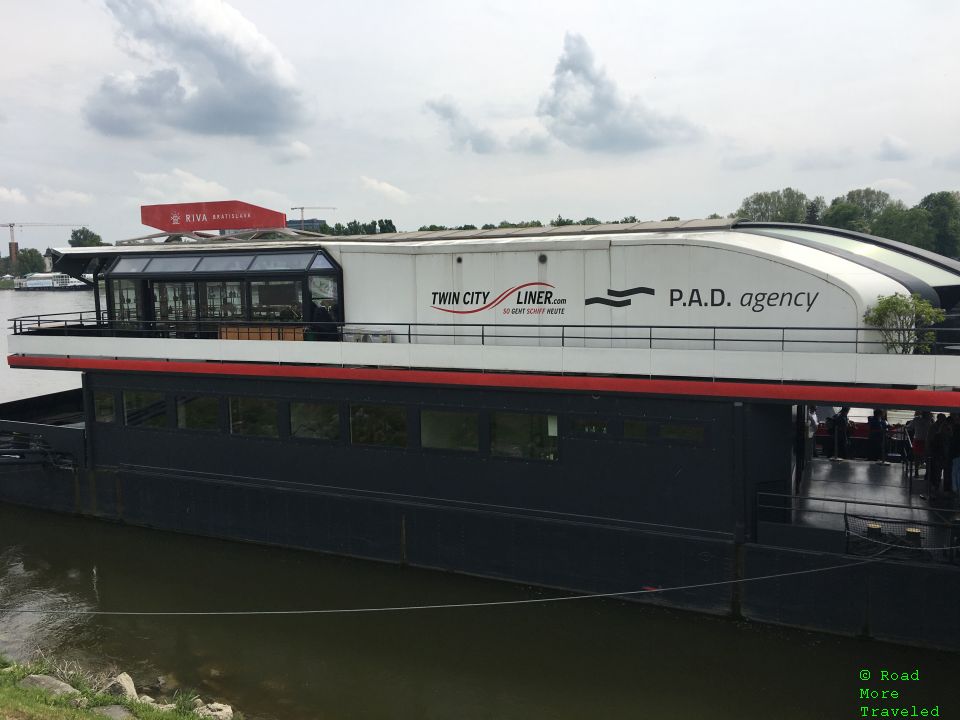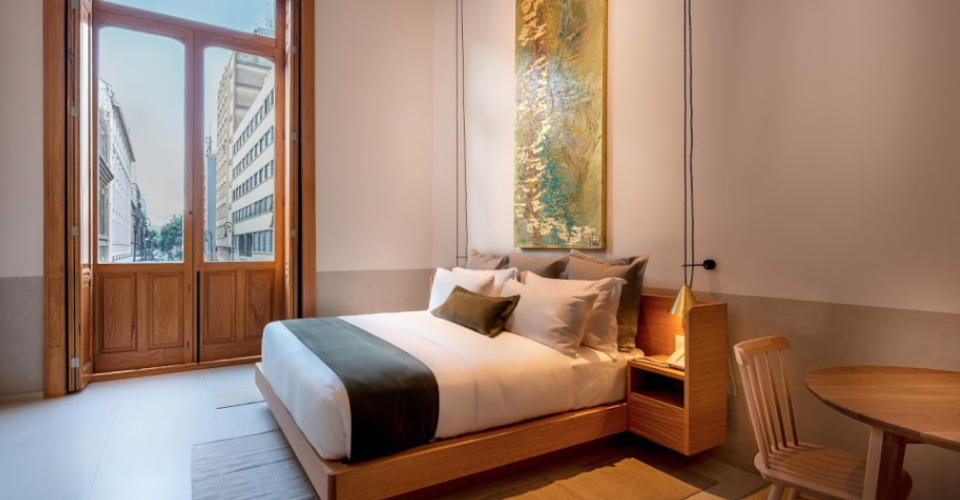I had but one “full” day in Vienna during my spring trip in 2022. While I debated hopping on the train to head to Salzburg, I ended up heading the other direction. Bratislava, Slovakia is a short hop from Vienna, and provided the opportunity to mark another country off my list. And so I embarked on a day trip, but not over land. Instead, I decided to ride the Twin City Liner Ferry for a taste of a cruise down the Danube.
Note: this post is part of my trip report series covering my visit to Austria in May, 2022. Click here for the trip report index and introductory post.
Taking the Twin City Liner Ferry From Vienna to Bratislava
There’s really not much to getting between the two cities. It’s only about 5o miles (80 kilometers) by road, after all.
Both buses and trains run every 30-60 minutes all day long, with the trip taking 60-90 minutes. In fact, I took an ICE train back to Vienna in the evening. But there is another option from late March through October – the Twin City Liner ferry. Prices range from €25 to €52, depending on booking class. If you’re going to Bratislava specifically to visit Bratislava Castle and old town, the ferry works quite well. The ferry docks at the edge of old town, a 15-20 minute walk to the castle.
During low season (late March through April and October), ferries depart at 9 am from Bratislava, with a return trip at 4 pm. During high season, ferries depart Vienna at 8:30 am, 12:30 pm, and 4:30 pm. They return from Bratislava at 10:30 am, 2:30 pm, and 6:30 pm. The sailing takes 75 minutes to Bratislava and 90 minutes to Vienna.
Twin City Liner ferries depart not from the Danube itself, but from Schwedenplatz on one of the city’s canals. As a frame of reference, it’s a 10-15 minute walk from St. Stephen’s Cathedral in Old Town Vienna. If arriving on the Metro or Underground at Schwdenplatz, first head above ground to the Schwedenbrucke (Sweden Bridge).
Then walk follow the stairs/ramp to the restaurant and ticket area. You can’t miss the signs for the Twin City Liner on the southwest corner of the bridge.
If walking along the canal path, look for the pier between Marienbrucke and Schwedenbrucke.
Should you miss the pier, look for the Twin City Liner ticket signs along the canal.
Twin City Liner Ferry, Vienna to Bratislava – Check-In and Seating
If you purchase tickets online, there’s not much of a check-in process. You just wait by this sign for boarding to begin, and an agent checks your ticket and passport as you board. You can also purchase walk-up tickets at the ticket office upstairs. The boat was maybe 1/2 full the day I traveled, so there were plenty of walk-up tickets available. Boarding begins about 10-15 minutes before scheduled departure. On our sailing, the inbound craft experienced about a 10-minute inbound delay, so boarding began at about the scheduled departure time of 12:30.
I decided to pay the extra money (50 euro at the time) for the top level “Captain’s Lounge” seats. So what does the extra money get you? Slightly wider seats on the upper deck, with easier/quicker access to the outdoor observation decks. A TV screen at the back alternates between displaying announcements and a moving map.
At the front of the cabin is a communal mobile phone charging box, along with another announcement screen/moving map. Also at the front is a pretty cool forward camera.
There are 220v European plug sockets along the wall if you brought a wall charger.
Seats in the Captain’s Lounge are named, with four seats per table at the window and six in the middle. I assigned myself Carnuntum Seat D, next to the window. Nobody else showed up to my table, so I ended up having the whole thing to myself. There was a snack/drink menu waiting at the table; a Captain’s Lounge ticket does not include snacks or drinks. It does include waiter service, though, so you don’t have to walk up to the snack bar.
As a frame of reference, here’s what standard seats look like.
All passengers receive the same access to the outdoor observation deck, in the aft section which wraps around both sides. You can buy a seat out on the open deck for 32 euro. These seats can’t be reserved online, though; you can only buy at the ticket office from one hour before departure. Or, you can take a chance on empty seats remaining and sit outside for a bit after departure. Despite pretty nice early May weather (mid-60s and overcast), these seats remained mostly empty on this sailing.
If you head out on the walkways on the sides of the ship, beware that there’s quite a bit of splash at full speed. Also, the crew make periodic announcements about significant landmarks en route.
So is it worth the extra money for the Captain’s Lounge? Not really, especially if you plan on spending a lot of time out on deck anyway. The table is nice to have, though.
The Twin City Liner Ferry Sailing to Bratislava
As mentioned, I took the 12:30 sailing from Vienna, which ended up leaving about 10 minutes late. The first 20 minutes or so of the ride goes down a narrow canal through the city. At that point, you reach the Danube – near the airport ironically enough, though you can’t actually see it.
We soon passed an odd landmark, Barbara Rohrbrücke (Barbara Bridge). It looks a like a pedestrian bridge, though seems too narrow to actually walk across.
The area around the Danube east of Vienna makes up a very large nature reserve. As a result, it’s heavily forested countryside. And you probably wouldn’t guess you’re only a few miles from Vienna if you didn’t know better.
Soon, a Viking River Cruise ship passed us going the other direction towards Vienna. Several Viking cruises ply these waters between Germany and Romania. I looked into one of these cruises several years ago, but ultimately didn’t go through with it. Maybe we can try again in the next few years.
About 20 minutes or so before reaching Bratislava, you pass the only bridge across the Danube between the two cities. This is the Andreas Maurer Bridge approaching Hainburg.
After crossing the bridge, you reach the historic town of Hainburg an der Donau on the right bank. Permanent settlements date back to Roman times, with the city of Carnuntum nearby to the west.
Once past the cathedral, you get a really nice view of Hainburg Castle on the hill overlooking the town. The castle originally dates to the 11th century, though it was destroyed by the Ottomans in 1683, then rebuilt about 25 years later.
Not long after passing Hainburg are the ruins of Röthelstein Castle, also on the right bank. This castle dates to the late 12th century, but was abandoned in the early 16th century. You can hike to the top of the hill to explore the ruins.
Just before arrival in Bratislava is perhaps the most interesting landmark of the short trip. That’s Devinsky hrad (Devin Castle), on the border of Austria and Slovakia at the confluence of the Danube and Morava Rivers. This castle has quite a history, with original construction dating to the mid-9th century. The last fortification was built in the 17th century. It also carried historical significance during the Cold War era. The Iron Curtain ran just in front of the castle. Though the castle itself remained open to the public, the surrounding area was a heavily fortified military zone. Numerous watchtowers kept a close eye on visitors. After the Velvet Revolution in 1989, the newly independent government dismantled the fortifications, much as with the Berlin Wall.
The best view of the castle occurs as you pass in front of the Port of Devin and the Devin Lighthouse. You can see why this made an effective fortification spot. The cliff above the port provides an expansive view of the Danube below, making it an excellent way for those who controlled the castle to also control river traffic.
Present-day Devin is on the outskirts of Bratislava, so it’s not long before you reach the city. Before long the unmistakable towers of Bratislava Castle appear on the left bank.
There’s also a public art installation of some kind along the river.
Finally, we stepped off the ship and bid adieu to our vessel, about 10 minutes behind schedule.
The dock is essentially directly across the street from Old Town Bratislava. If you’re just here to see the castle and Old Town, there’s clear signage to both. There’s also a trolley and bus station on the street directly in front of the dock if you’re headed elsewhere in the city.
Final Thoughts – Vienna to Bratislava by Ferry
While I enjoy boat rides, do I necessarily recommend the ferry from Vienna to Bratislava? Probably not, unless you just like to experience sailing down the Danube. In fairness, it’s also a fair way to survey some of the important landmarks between the two cities. It’s considerably more expensive than going by train or bus, though. Nor is it any faster than either. I definitely wouldn’t spend the extra money on the Captain’s Lounge, which doesn’t offer anything in particular over the cheap seats.

